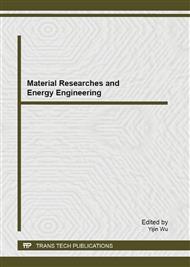p.543
p.549
p.556
p.560
p.566
p.571
p.581
p.587
p.594
An Approach to Calculate the Directions of Crystal Defects in Synchrotron Radiation Topography
Abstract:
An approach was proposed to calculate the directions of crystal defects in the research of synchrotron radiation topography (SRT). The calculating method was deduced based on the theory of homogeneous coordinates. When spherical coordinates of a crystal defect had been calculated in a radiograph, the directions of the defect on any other radiograph, taken after the specimen had been turned around any axis in the SRT experiments, could be calculated. The directions of crystal defects can be determined by the methods previously been used only if the images of the same defects are similar in the topographs, but it is often not the case in the SRT experiments. With the method proposed in this paper, it is convenient to analyze the defects in different radiographs on which the images of the same defects are dissimilar. An example was taken to show the use of the method.
Info:
Periodical:
Pages:
566-570
Citation:
Online since:
September 2013
Authors:
Keywords:
Price:
Сopyright:
© 2013 Trans Tech Publications Ltd. All Rights Reserved
Share:
Citation:


